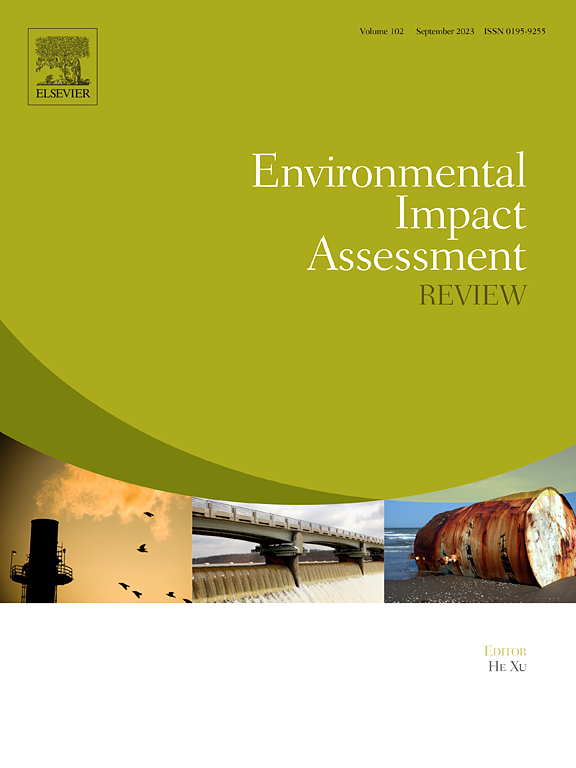Balancing act: How community measures shape environmental risk perceptions and preventive behaviours during the COVID-19 pandemic
IF 11.2
1区 社会学
Q1 ENVIRONMENTAL STUDIES
引用次数: 0
Abstract
Residential communities play a crucial role in decelerating public health crises. The perceived risk of viral infection via environmental media may change dynamically, leading to heterogeneous interactions between individuals and communities intended to prevent an epidemic. However, it remains unclear how community-level measures influence individual preventive behaviours. Taking COVID-19 as an example, three rounds of surveys were conducted across different stages of the pandemic in Beijing, China, from March 2020 to August 2021. The results show that individuals maintained high levels of environmental risk perceptions (3.97 out of 5 on average) and a high likelihood of engaging in preventive behaviours (72.1 % on average) across different stages. Droplet- and aerosol-related environmental risk perceptions and preventive behaviours were promoted most actively in environmental media and exceeded perceptions and behaviours related to buildings' sanitary plumbing systems and wastewater by 25.5 %. By establishing a series of structural equation models, we analysed the decision-making process for preventive behaviour influenced by environmental risk perceptions (average β = 0.32). Individual mentalities on community measures mediated this decision-making process by 16.7 % ∼ 25.7 %. Additionally, we found that the mediating effects increased with the stringency of community measures and varied across different environmental media. The findings highlight the significance of community-level governance in reshaping individuals' environmental risk perceptions and preventive behaviours to enable more effective public health strategies and enhance the resilience of cities.
平衡行动:社区措施如何在COVID-19大流行期间塑造环境风险认知和预防行为
居民社区在减缓公共卫生危机方面发挥着至关重要的作用。通过环境媒介感知到的病毒感染风险可能会发生动态变化,从而导致个人和社区之间出现旨在预防流行病的异质相互作用。然而,目前尚不清楚社区层面的措施如何影响个人的预防行为。以新冠肺炎疫情为例,从2020年3月至2021年8月,在中国北京开展了三轮疫情不同阶段的调查。结果表明,在不同的阶段,个体保持了高水平的环境风险感知(平均为3.97 / 5)和高可能性参与预防行为(平均为72.1%)。环境媒体最积极地宣传了与液滴和气溶胶有关的环境风险认知和预防行为,超过了与建筑物卫生管道系统和废水有关的认知和行为25.5%。通过建立一系列结构方程模型,我们分析了环境风险感知对预防行为决策过程的影响(平均β = 0.32)。对社区措施的个人心态调节了16.7% ~ 25.7%的决策过程。此外,我们发现中介效应随着社区措施的严格程度而增加,并且在不同的环境介质中有所不同。研究结果强调了社区一级治理在重塑个人环境风险观念和预防行为方面的重要性,从而实现更有效的公共卫生战略并增强城市的复原力。
本文章由计算机程序翻译,如有差异,请以英文原文为准。
求助全文
约1分钟内获得全文
求助全文
来源期刊

Environmental Impact Assessment Review
ENVIRONMENTAL STUDIES-
CiteScore
12.60
自引率
10.10%
发文量
200
审稿时长
33 days
期刊介绍:
Environmental Impact Assessment Review is an interdisciplinary journal that serves a global audience of practitioners, policymakers, and academics involved in assessing the environmental impact of policies, projects, processes, and products. The journal focuses on innovative theory and practice in environmental impact assessment (EIA). Papers are expected to present innovative ideas, be topical, and coherent. The journal emphasizes concepts, methods, techniques, approaches, and systems related to EIA theory and practice.
 求助内容:
求助内容: 应助结果提醒方式:
应助结果提醒方式:


